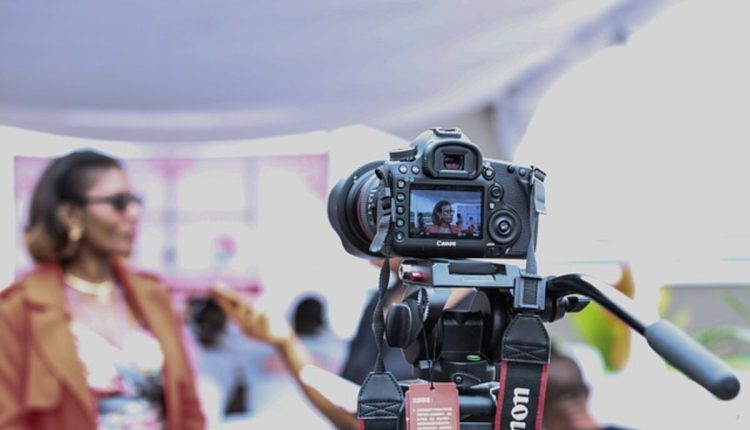Digital cameras have several advantages over film cameras, so they are becoming increasingly popular. Some of these benefits include seeing your photos as soon as possible after taking them and deciding whether to keep them. Many models also allow you to record videos with the push of a button, and a memory card can hold many more photos than a roll of film.
Even though digital cameras improve yearly, it can be challenging to determine which features are most important to you and which you will never use.
The following are a few tips from our product specialists to help you choose the best digital camera.
Megapixels (MP): In general, the more MPs a camera has, the better quality its photos will be. Remember that on a standard 4×6 print, you won’t be able to tell the difference in quality. Large-scale enlargements of images, like posters, are typically the only way to distinguish between the two.
Look for a digital camera with image stabilization (IS) if you don’t want blurry photos because of your shaking hands or fast-moving subjects. To counteract the effects of camera shake, manufacturers of digital cameras with image stabilization technology either incorporate stabilizing hardware into the camera or boost the sensitivity and shutter speed (which results in the camera taking the picture more quickly).
Auto-focusing on faces is becoming standard in many new digital cameras thanks to built-in face recognition software. Because of this, people’s faces will be less blurry and more transparent in your photographs.
LCD Screen Size: If your LCD screen is too small, you may have trouble seeing what’s in the frame. It could also hinder your ability to examine the shot later on. Therefore, before buying the camera, make sure the screen size suits your needs.
Optical Zoom: For general photography, a 3x optical zoom, which is standard for modern digital cameras, is more than sufficient. A camera with a larger optical zoom should be considered if you want to capture details of faraway subjects, such as an animal in a tree. It’s important to differentiate between optical zoom, where the lens physically extends, and digital zoom when the image is enlarged digitally.
Ensure the camera is easy to carry around and has a grip that feels good in your hand. Additionally, the thinner varieties of digital cameras may fit nicely into a pocket or purse, so you’ll never miss out on a beautiful photo opportunity again.
Scene and Shooting Modes: Modern digital cameras include various shooting modes, including fully automatic ones. You may find it helpful to have a camera that can take multiple shots in rapid succession if you hold down the shutter button. The scene modes of a digital camera are just as important as the shooting modes. Portrait mode, landscape mode, night scene mode, etc. are all examples of the various scene modes that can be used. Using these scene modes, you can get the optimal camera settings for every given scenario.
Digital cameras can use anything from standard AA alkaline batteries to rechargeable Li-Ion cells. Before making a purchase, consider the camera’s battery requirements. Some people would rather use a disposable digital camera than one that requires recharging its battery pack. The main benefit of a rechargeable battery pack is that you can use it repeatedly without ever having to buy new batteries for your camera. If this type of battery dies, say during a wedding, you won’t be able to go out to the store and pick up a replacement quickly. You may always buy two rechargeable batteries if you want the best of all worlds.
Digital cameras with built-in image editing programs are a good choice if you intend to modify your captured images. Batteries, a battery charger, a USB cable (for use with a computer), a case, memory cards, an audio-visual cable, etc., are all additional equipment.
In addition to the camera itself, you’ll need a memory card large enough to store all of your photos and videos because the default storage on most digital cameras is minimal. Additionally, it is recommended that you get a case to safeguard your new camera.
Definitions:
One million pixels is one megapixel. The more pixels in an image, the higher the resolution, hence the better the image quality.
To create the most straightforward possible portrait, a camera equipped with face recognition technology will first locate any human faces within the picture.
Optical zoom allows for magnification without compromising image quality or resolution by simply adjusting the lens.
Definition of digital zoom: the process of enlarging an image’s central portion, typically at the expense of the image’s resolution.
Camcorders and digital still cameras provide what are known as “shooting modes” or “scene modes,” which are tailor-made image settings for specific environments.
Lithium-ion (Li-Ion) batteries are rechargeable high-capacity in many handheld electronic gadgets.
The abbreviation “AV” refers to an audio/video cable used to transmit data between electronic devices.
Image stabilization is a feature in many modern cameras and camcorders that helps eliminate blur caused by hand movement.
USB, short for “Universal Serial Bus,” is a computer connector that can connect various electrical devices.
A device’s built-in memory allows it to store specific data without needing an external memory card.
DirSelect.com is an online store that sells electronics and parts. We have low prices, quick shipping, and helpful staff. Come to our shop [http://www.dirselect.com] and pick out the perfect digital camera for you from our extensive inventory! Click [http://www.dirselect.com/index.php?l=product_list&c=95] to be sent straight to the Digital Camera subcategory!
Read also: i phone Hacks and Threats to be able to Personal Privacy


